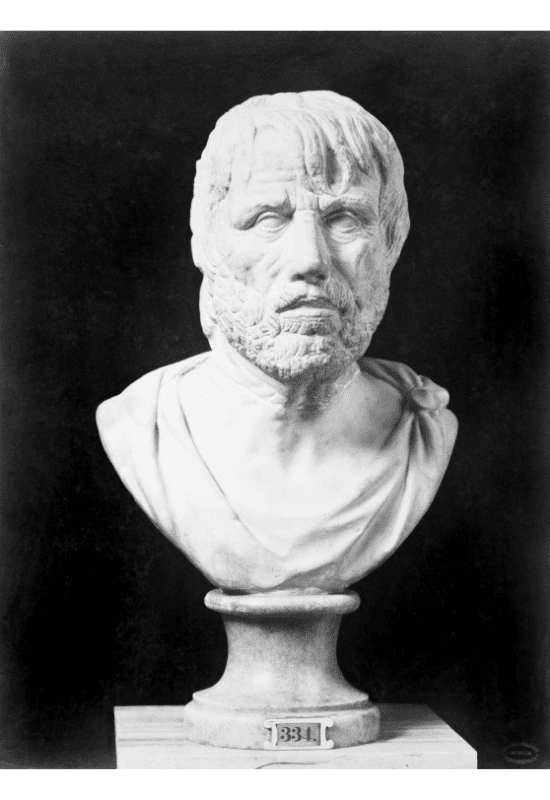Seize the day - gain power over yourself
Carpe diem. Seize the day. But what does it mean to seize the day? This centuries-old saying has inspired generations of people to make the most of every moment. It reminds us that we should create and preserve memories, because life is fragile and fleeting.
The saying "Carpe diem" perfectly sums up this spirit. In this post, we'll take you on an epic journey from ancient times to the present day and explore how (and why) this incredible expression is still relevant today.
The origins of "Carpe Diem" - tracing the Latin phrase back to ancient Rome.
The phrase "Carpe diem" is an old Latin proverb that means "seize the day" and can be traced back to ancient Rome. The Roman poet Horace popularized it in his "Odes" when he wrote: "carpe diem quam minimum credula postero," which translates as "Seize the day by trusting as little as possible in tomorrow."
Over the centuries, this delicate but beautiful phrase has appeared in various works of literature, such as Donne's "To His Mistress Going To Bed," where it was used to express reverent beauty, and Shelley's "Adonais" to show two sides of death. Hopefully it will continue to be used to remind us all that it is the moments in life that count.
Famous examples of "Carpe Diem" in history - from Shakespeare to modern celebrities
"Carpe diem" or "Seize the day" is an idiom that is fascinating and popular in many cultures around the world. The phrase is of Latin origin and was popularized by the Roman poet Horace and then frequently quoted in literary works such as Shakespeare's Hamlet and Romeo & Juliet.
But there are not only characters in literature who embodied this motto. The history of mankind is full of great personalities who decided to draw from the full.
To stay in ancient Rome, let's take as a first example of carpe diem Julius Caesar, the Roman commander and dictator. He was ambitious and daring and conquered many countries and enemies. He also crossed the Rubicon River with his army, which was a point of no return and a declaration of war to the Roman Senate. Famous is his saying "alea iacta est", which means "the die is cast".
Article on alea iacta est:
He did not hesitate or regret his actions, but faced the consequences with courage and confidence. He lived by the motto "carpe diem" until he was murdered by his enemies on the Ides of March.
A second example of someone who embodied this philosophy was the famous Anne Frank, a young Jewish girl who hid from the Nazis during World War II. Anne Frank wrote a diary in which she recorded her hopes, fears and dreams.
She did not let the horrors of war stop her from expressing herself and finding joy in small things. She wrote, "I think not of all the misery, but of the beauty that remains to me." Anne Frank's diary is a testament to her courage and optimism in the face of adversity. She showed us how to get through the day even in the darkest of times.
Another example of someone who embodied this philosophy was Stephen Hawking, the famous physicist and cosmologist. When Hawking was 21 years old, he was diagnosed with a rare motor neuron disease and had only a few years to live.
Nevertheless, he did not let his illness stop him from pursuing his passion for science and exploring the secrets of the universe. He wrote several bestsellers, made groundbreaking discoveries, and inspired millions of people with his courage and curiosity.
Hawking once said:
"No matter how difficult life may be, there is always something you can do and achieve. The important thing is that you don't just give up."
He lived to the age of 76, leaving a legacy of brilliance and optimism. Hawking was a true example of carpe diem.
How we can live by the saying today - how to apply it meaningfully in our own lives
The phrase "Carpe diem" has inspired and encouraged people throughout history to seize the day, be present and make the most of their lives.
A few decades ago Carpe diem popularized again when it was made the subject of the movie "Dead Poets Society" starring Robin Williams.
If we take this timeless proverb literally, it means that today is a treasure that we should be conscious and intentional about using. To bring this philosophy into our daily lives, we can make small conscious efforts, such as focusing on being fully present in conversations with friends or disconnecting from technology to enjoy small moments each day.
By gradually integrating them into our lives, we honor each moment and live life to the fullest.
Encouragement for readers - inspirational message about embracing every moment.
It's important to remember that life is a precious and fleeting thing that is all too easy to forget. The Latin phrase "Carpe diem" - "Seize the day" - has been around for centuries and reminds us to make the most of every moment.
This saying has been echoed throughout history, from Julius Caesar's triumphant declaration of "Veni, vidi, vici" to Anne Frank's inspiring words to live life with passion.
Call to action - concrete steps to make the most of life
The phrase "Carpe diem" is often used as a call to action, and these Latin words literally mean "Seize the day."
First mentioned in Horace's Odes, it urges people to make the most of present moments - not to dwell on the past or what lies ahead, but to truly live in the present.
Many have put this saying into practice, for example, American President John F. Kennedy during his inaugural address. To live up to this phrase, we must now make conscious decisions to choose the life we want from now on - this means setting goals and paying attention to how our efforts and actions may affect our future selves.
Life moves fast and if we're not careful, we risk missing moments that could really shape us. So seize the day and take a few deliberate steps now - even if they may seem small, because even small things are known to make.
James Clear describes in the book Atomic Habits (affiliate link Amazon) impressively demonstrates how small steady improvements can lead to breakthrough results.
Concluding words - final remarks and advice for a fulfilled life
The phrase "Carpe diem" is Latin for "Seize the day" and has been used throughout history as a reminder to seize opportunities and engage fully in life. Famous examples include the passage by the Roman poet Horace about celebrating the fleeting moment, and others by Ovid, Plato, William Shakespeare, Friedrich Schiller, and Alfred Tennyson.
Today, this call to action encourages people of all ages to emulate the ancient wisdom and strive for greater achievements. A final piece of advice: don't forget your goal, enjoy life while it lasts, remain determined when faced with obstacles, and always remember that life should be lived without regret. Carpe diem!
To conclude this post, I would like to challenge you to face life with an open mind. Take advantage of every single moment that comes your way, because it could be your last. There is no wasted time - every minute that passes offers us the opportunity to grow and improve."Carpe diem" reminds us to make our lives meaningful and make the most of every single day.
By focusing on goals that bring us joy, owning up to our mistakes, and rediscovering our passions, we can live a beautiful life with meaning and purpose. So go out into the world of carpe diem and know that if you enjoy every moment to the fullest, taking calculated risks, you will eventually achieve success - even if it's not immediately visible or tangible. Life is too short to have regrets - so seize the opportunities and go for what you want.








